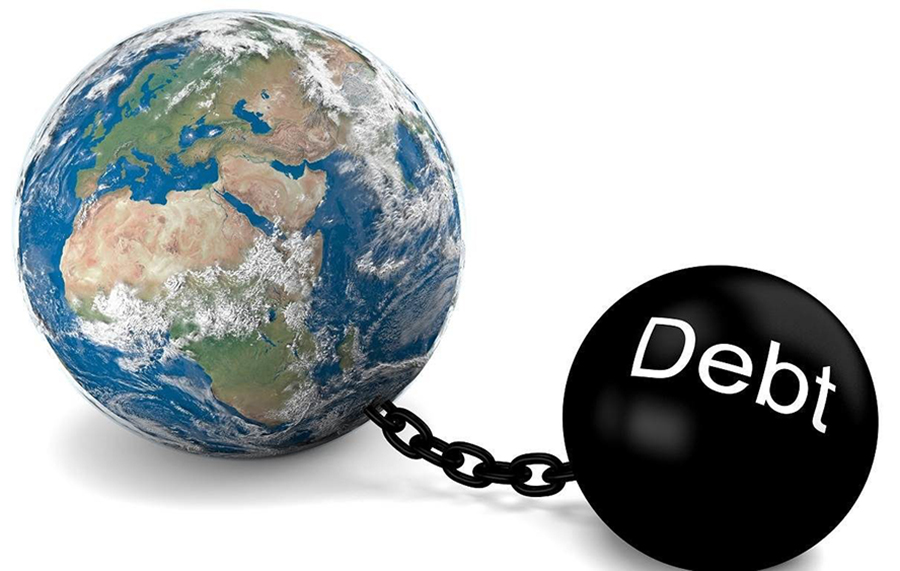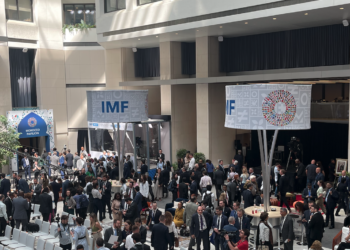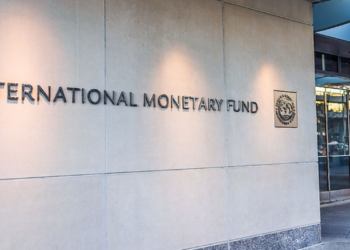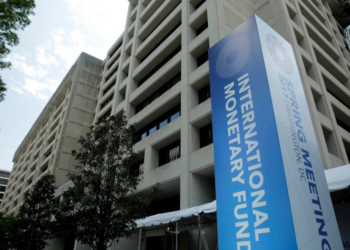Since the global financial crises of 2008 which pushed financial institutions to the brink of collapse and saw central banks stepping in to offer bailout funds, the international monetary system has been on trial with a rapid rise in the price of gold, showing wavering confidence in the United States Dollar as a hegemony and reserve currency, as investors look for a safe haven to preserve their wealth.
We also witnessed the debt default crises of Greece, Spain, Portugal and Italy with the European Central Bank (ECB) and the International Monetary Fund (IMF) coming to their rescue.
Consequently, there has been surreptitious and clandestine moves by central banks to shore up their gold reserves to serve as buffers and a hedge against inflation and currency devaluation. Massive bailout packages were embarked upon in the form of quantitative easing also known as asset purchases or printing of currency from “thin air” to provide liquidity for the financial institutions that were affected and jumpstart the economy. This has put tremendous pressure on most nations’ ability to service their debts because of accrued interest. With successive increases in budget deficits, many nations have resorted to rolling over the principal sum by extension of the tenor of these debts.
The global pandemic which led to a total shutdown of the global economy in the year 2020 has compounded this debt-based economy that has been in place since 1971 with the world’s total debt stock reaching the sum of two hundred and eighty-one trillion United States Dollars ($281,000,000,000,000.00) as at 31st December 2020 according to Bloomberg News.
The United States of America whose currency, the Dollar, covers over 60% of the world’s trade has over twenty-eight trillion dollars in debt with an external debt to GDP Ratio of 129.99%; while the Eurozone whose currency is the Euro covering over 20% of the world’s trade and comprising major trading nations like Germany, United Kingdom, France, Netherlands, and Belgium have recorded a combined sum of about ten trillion dollars with an average external debt to GDP Ratio of 324.17% (See world debt clock).
The sustainability of these debt levels globally is seriously in doubt. Coupled with the shrinking of revenue streams and the global recession, most forecasts predict a slow recovery and depressed economic growth.
As the world transitions into a new international monetary system with the use of distributed ledger technology as expounded in my last article, “The Fourth Industrial Revolution and The Birth Of A New International Monetary System,” the following questions arise. Would these debts be transited from the old system to the new system? Who is to bailout these nations from these debts? Does the Special Drawing Rights (SDR) instruments of the IMF as presently constituted have the capacity to bail out the world in these debt crises and also provide liquidity to jumpstart the global economy? Would a complete write-off of these debts as debt jubilee not have consequences on the creditors as these are assets in their books? What are the instruments or assets that would serve as possible options/solutions to these debt crises without having hyper-inflationary impact or stagflation globally?
I strongly opine that these debts from this present debt economy would not be carried over to the new international monetary system otherwise known as “THE GREAT RESET” to ensure a level playing field for all trading nations. The IMF has muted the idea of debt rescheduling and restructuring for under-developed and poorer nations under this pandemic. This is just a precursor to the overall plans in place to resolve these debt crises.
Gold, though in limited supply, is the oldest asset and a good store of value with a total market capitalisation of about eight trillion dollars. It is being muted as an instrument to be used to offset these debts by a revaluation of the asset from its present price of $1,741.70 per ounce to over and above $10,000.00 per ounce. This increase is to provide a cover to clear these old debts and also provide liquidity for the global markets. By implication, this makes the total market capitalisation over a quadrillion dollars and it replaces the quest for crude-oil dollars. This is a major reason for the aggressive accumulation of gold by these nations.
Poland recently announced plans to acquire one hundred tonnes of gold by its central bank. China has been secretly acquiring gold in African countries like Mozambique, Nigeria and the Sahel Region. Russia, Turkey, and Kazakhstan have been accumulating gold with the first two countries announcing plans to dump the Dollar. Venezuela and Germany have repatriated their gold reserves from New York to their countries in the period between 2011 and 2017.
An electronic special drawing rights ‘e-SDR’ has been muted at the World Economic Summit as the international reserve currency since 2018 to be fully backed by reserve currencies as the world transits to the use of blockchain technology or distributed ledger technology with the use of cryptocurrencies. The ecosystem for this new payment system (plumbing of the payment rails infrastructure, connectivity amongst banks and Central Banks through nodes and automated programming interface, API) has been successfully experimented and tested. We are currently at the last stage which is regulatory clarity for individual nations and governance policy issues around this new technology before a global consensus for mass adoption would be reached at G20 and G30 Summit levels meetings.
Nigeria’s debt stock is currently over one hundred and fifteen billion dollars (see world debt clock). We are using over 30% of our budget to service debt. With a declining revenue stream from crude oil sales and successive budget deficits in the last thirty years, we are not too far from a debt default despite our very low Debt to GDP Ratio of 9.97%. This is very deceptive and should not be used as a basis for assessing the debt sustainability of the country due to our very weak infrastructural base and the insecurity bedevilling the nation.
It is worrisome that the Northwestern part of the country is experiencing widespread banditry and terrorism, particularly around Zamfara, Kebbi and Niger States. These are areas with proven gold deposits with illegal mining currently gaining grounds. Unfortunately, the nation has not taken proactive steps to declare these areas as national assets for exploitation of the gold to add to the nation’s reserves with the Central Bank, rather insecurity has been used to obfuscate the illegal trade going on with the active connivance of foreigners. The recent procurement of gold by the Central Bank from Zamfara State is a complete irony of fate as the world pivots away from the petrol dollar economy.
It is my earnest hope that this insecurity is properly contained and nipped in the bud as future increases in the price of gold way above its current price will lead to a scramble for prospecting for gold with heightening insecurity. The eastern region of Goma in the Democratic Republic of Congo which supplies 90% of the world’s coltan comes to mind. The solution to the world’s debt and liquidity crises is purely an economic issue but it is laced with a new social and political order to be exerted by the State through more central planning and control of our nationhood.
Written By Anitche Ndudim Rowland




















